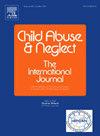The socioeconomic outcomes of sexual minority youth who have aged-out of foster care in California
IF 3.4
2区 心理学
Q1 FAMILY STUDIES
引用次数: 0
Abstract
Background
Little is known about the adjustment of sexual minority youth as they “age-out” of foster care and begin living independently. Existing data is particularly limited for young people after they turn age 21.
Objective
The present study aims to address this gap by examining key socioeconomic outcomes of sexual minority youth and their heterosexual peers following their exit from the California foster care system.
Participants and setting
We used representative survey data from four waves of the California Youth Transitions to Adulthood Study (CalYOUTH), which followed young people at ages 17, 19, 21, and 23.
Methods
Bivariate statistics and logistic regression analyses were used to examine youths' educational, vocational, financial, and housing outcomes at age 23, controlling for a range of covariates that can explain the differences attributed to sexual orientation.
Results
Of those youth who provided information on their sexual orientation (n = 541), about half identified as sexual minority at least once, while the rest consistently identified as heterosexual across all four waves. Bivariate analyses revealed that sexual minority youth had lower rates of current employment, and higher rates of public food assistance, economic hardship, and homelessness at age 23. In multivariate analyses, the higher risk of homelessness (OR = 2.40, p = .01) and economic hardship (OR = 3.25, p < .001) among sexual minority youth remained significant after controlling for child welfare factors, demographics, and other covariates.
Conclusion
Sexual minority youth may experience increased socioeconomic disadvantage as they transition from foster care to independent adulthood. Implications and directions for future research will be discussed.
加州因年龄增长而被寄养的性少数青年的社会经济结果。
背景:当性少数青少年脱离寄养并开始独立生活时,他们的适应情况鲜为人知。对于21岁以后的年轻人,现有的数据尤其有限。目的:本研究旨在通过考察性少数青少年及其异性恋同龄人在离开加州寄养系统后的主要社会经济结果来解决这一差距。参与者和环境:我们使用了来自加州青年向成年过渡研究(CalYOUTH)四波的代表性调查数据,这些数据跟踪了17岁、19岁、21岁和23岁的年轻人。方法:采用双变量统计和逻辑回归分析来检验青年在23岁时的教育、职业、财务和住房结果,控制一系列可以解释性取向差异的协变量。结果:在那些提供了性取向信息的年轻人中(n = 541),大约一半的人至少一次承认自己是性少数群体,而其余的人在所有四次浪潮中都一直认为自己是异性恋。双变量分析显示,性少数青年的当前就业率较低,而在23岁时,公共食品援助、经济困难和无家可归的比例较高。在多变量分析中,无家可归(OR = 2.40, p = 0.01)和经济困难(OR = 3.25, p)的风险更高。结论:性少数青少年在从寄养过渡到独立成年的过程中,可能会经历更大的社会经济劣势。讨论了未来研究的意义和方向。
本文章由计算机程序翻译,如有差异,请以英文原文为准。
求助全文
约1分钟内获得全文
求助全文
来源期刊

Child Abuse & Neglect
Multiple-
CiteScore
7.40
自引率
10.40%
发文量
397
期刊介绍:
Official Publication of the International Society for Prevention of Child Abuse and Neglect. Child Abuse & Neglect The International Journal, provides an international, multidisciplinary forum on all aspects of child abuse and neglect, with special emphasis on prevention and treatment; the scope extends further to all those aspects of life which either favor or hinder child development. While contributions will primarily be from the fields of psychology, psychiatry, social work, medicine, nursing, law enforcement, legislature, education, and anthropology, the Journal encourages the concerned lay individual and child-oriented advocate organizations to contribute.
 求助内容:
求助内容: 应助结果提醒方式:
应助结果提醒方式:


